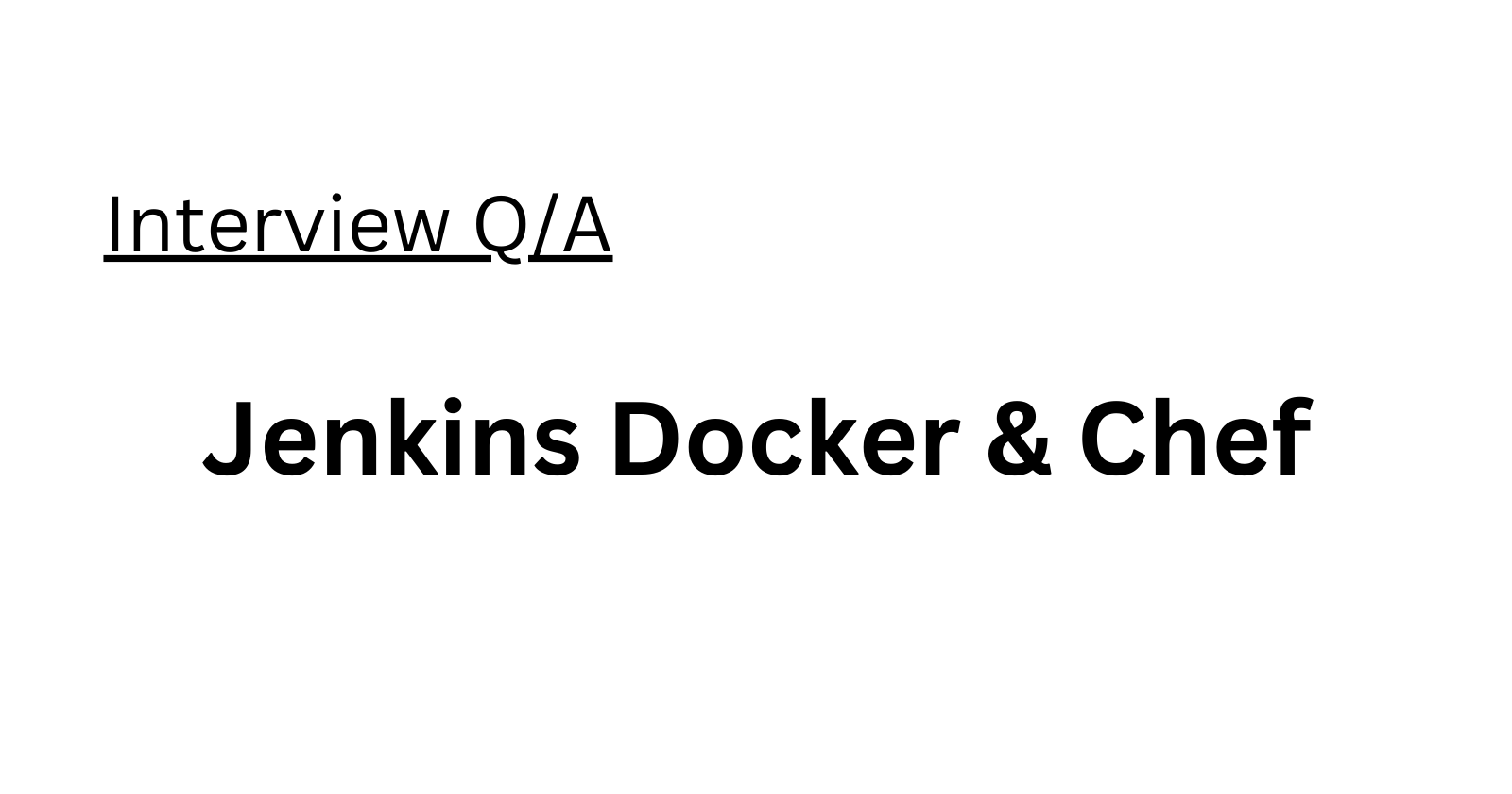Top 10 Interview Q/A on Jenkins Docker and Chef
 Amrutha D
Amrutha D
What is Jenkins? Jenkins is an open-source automation server used by developers to automate various aspects of the software development process. It helps in building, testing, and deploying software applications, as well as automating tasks related to continuous integration and delivery (CI/CD). Some key features of Jenkins include easy installation, extensibility through a large plugin ecosystem, scalability, customizability, and integrations with various tools and services.
What is Hudson? Hudson is an open-source continuous integration (CI) server that preceded Jenkins. It was designed to automate the build, test, and deployment process for software projects. While Hudson was once popular, it has been largely replaced by Jenkins, which has a more extensive user base and a more active development community. Many of the features of Hudson were carried over to Jenkins.
What are some of the plugins commonly used in Jenkins?
Jenkins offers a wide range of plugins to support different tools and technologies. Some commonly used plugins include the Git Plugin for Git integration, the Maven Plugin for building projects with Apache Maven, the Jenkins Pipeline Plugin for defining pipelines using a Groovy-based DSL, the Docker Plugin for building and testing applications within Docker containers, the Slack Plugin for sending notifications to Slack channels, and various others for customizing and extending Jenkins functionality.
How do Ant and Maven differ from Jenkins? Ant and Maven are build tools, while Jenkins is a continuous integration (CI) server. Ant is used to automate building Java-based applications using XML-based configurations, providing fine-grained control over the build process. Maven, on the other hand, follows conventions and best practices for building Java-based applications, with configuration defined in Project Object Model (POM) files. Jenkins is a CI server used to automate tasks like building, testing, and deploying applications. It can work in conjunction with build tools like Ant or Maven to automate the CI/CD process.
How have you used Docker previously? This question is about the candidate's personal experience with Docker. Docker is a tool used to create, deploy, and run applications within containers. The question seeks to understand how the candidate has applied Docker in their previous work, such as packaging and deploying applications, running tests, or using Docker in production environments.
What is Docker? Docker is a tool used for creating, deploying, and running applications inside containers. Containers are self-contained, lightweight packages that contain everything required for an application to run, including code, libraries, dependencies, and runtime. Docker is known for its portability, scalability, and efficient resource utilization.
What are the limits of Docker's Container Technology? Docker's container technology offers many advantages, but there are limitations to consider. These include resource constraints where containers share the same kernel as the host OS, potential compatibility issues with specific host OS versions, security concerns as containers are not completely isolated, and networking complexities when setting up and managing connections between containers and the host OS.
What are the Chef's Architecture Components? Chef is a configuration management tool with a client-server architecture. Its main components are:
Chef Server: Central hub storing configuration data for nodes.
Workstation: Machine for writing and managing Chef code.
Node: Systems managed by Chef, which can be physical or virtual.
Cookbook: Set of policies defining node configuration.
Policy: Rules specifying the desired state of a node, defined within cookbooks.
What command is used to upload a Cookbook in Chef? To upload a cookbook to the Chef Server, you can use the 'knife cookbook upload' command. For instance, 'knife cookbook upload mycookbook' uploads the "mycookbook" cookbook from the local workstation to the Chef Server. Multiple cookbooks can be uploaded by listing their names, separated by spaces.
What is a Recipe in Chef? In Chef, a recipe is a collection of resources written in the Chef domain-specific language (DSL) to define how a node should be configured. Recipes can include instructions for installing packages, modifying configuration files, and running scripts. Recipes are organized into cookbooks and are used to configure nodes in an infrastructure by adding them to the node's run list.
What is a Chef? Chef is a configuration management tool that automates the process of configuring and managing infrastructure and applications. It enables users to define infrastructure as code and follows a client-server architecture. Key features include declarative configuration, infrastructure as code, idempotency, extensibility, and integration with various tools and services. Chef is widely used to ensure consistent configuration and management of infrastructure and applications across different environments.
Subscribe to my newsletter
Read articles from Amrutha D directly inside your inbox. Subscribe to the newsletter, and don't miss out.
Written by

Amrutha D
Amrutha D
Gen AI Video Creator | Gen AIOps | AIOps Cloud DevOps Engineer | Let's Connect & share Technical knowledge & grow together in Technologies Everyday..